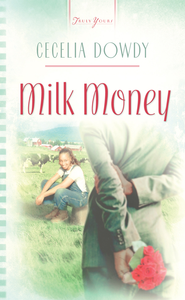
I’m talking about Saint Nicholas! For some reason, I’ve always been fascinated with why we celebrate Christmas. I’m not sure if it’s because I never celebrated as a child – or, some other reason!
Since it’s Christmas, I thought it’d be fun to share some Saint Nicholas facts.
1. Very little is known about the real Saint Nicholas.
2. He was born in Asia-Minor – which is now modern-day Turkey – in the third century.
3. He was the Bishop of Myra in the fourth century.
4. He attended the First Council of Nicaea.
5. Most stories about Saint Nicholas are legends – his being a secret gift-giver stemmed from the legend of his secretly leaving dowries for a poor widower’s daughters.
6. The beginning of Saint Nicholas becoming our modern-day Santa Claus happened in New York around 1804. Saint Nicolas became our modern-day Santa Claus via a series of New York events:
7. A man named John Pintard met with New York leaders to establish the New York Historical Society. The Historical Society members celebrated the early Dutch-roots heritage of New York by having an annual dinner on December 6th: Saint Nicholas Day.
8. Washington Irving, Pintard’s brother-in-law and a member of the Historical Society, wrote A History Of New York under the pseudonym Diedrich Knickerboker. A History of New York mentioned Saint Nicholas several times, further popularizing him.
9. Clement Moore, another member of the Historical Society, had his poem, The Night Before Christmas, published anonymously in the New York Sentinel in 1823, further popularized Saint Nicholas’s character. ***An ongoing debate is the authorship of this poem – either Clement Moore or Henry Livingston was the author.
10. The popularity of this poem gave Saint Nicholas great influence on how we know him today. It was the first widely accepted reference to Saint Nicholas having reindeer and driving a sleigh.
***Prior to this most of Santa’s characteristics were believed to be derived from Odin, a Germanic God. Odin traveled through the air on a six-legged horse as part of the ghostly Wild Hunt. Odin also had a long white beard, and he visited people, bearing gifts.
Also, The Night Before Christmas gave names to Saint Nicholas’s reindeer. This poem proved significant in developing the modern image of Nicholas’s physical appearance, too – he no longer appeared as a bishop, wearing bishop’s clothing. He now was a red-cheeked jolly man. In this poem, Saint Nicholas made his visit on Christmas Eve – moving his “day” from December 6th (Saint Nicholas Day) to December 24th.
11. Thomas Nast – A New Yorker who was a cartoonist and illustrator at Harper’s Weekly. His drawings had a vast influence on the popularity of Santa Claus. His drawings established the following Santa Claus traits:
Nast’s drawings established Santa as a toymaker living in the North Pole with his elves as assistants. He also established Santa receiving letters from kids as well as kids leaving snacks out for Santa to enjoy. He also showed Santa with his giant book with the names of children.
12. Francis Church, a journalist, answered an editorial letter from a little girl named Virginia O’Hanlon. She wanted to know if there was a Santa Claus and his response was printed in the New York Sun. It was reprinted and embraced by the public each year until The Sun went out of business.
13. Haddon Sundblom – an artist, drew drawings every year for Coca-Cola, further popularizing Santa Claus.
So, there you have it! Those are the main reasons why third-century-born Saint Nicholas became our modern-day Santa Claus!
Can you recommend any books about Christmas or Santa Claus traditions?
I’ve read a few over the years and the two that I enjoyed the most were:
~Cecelia Dowdy~
My romance collection is on sale for 99 cents each.



– See more at: http://ceceliadowdy.com/blog/#sthash.YzNHlzq8.dpuf













 What are you serving for Thanksgiving dinner?
What are you serving for Thanksgiving dinner?